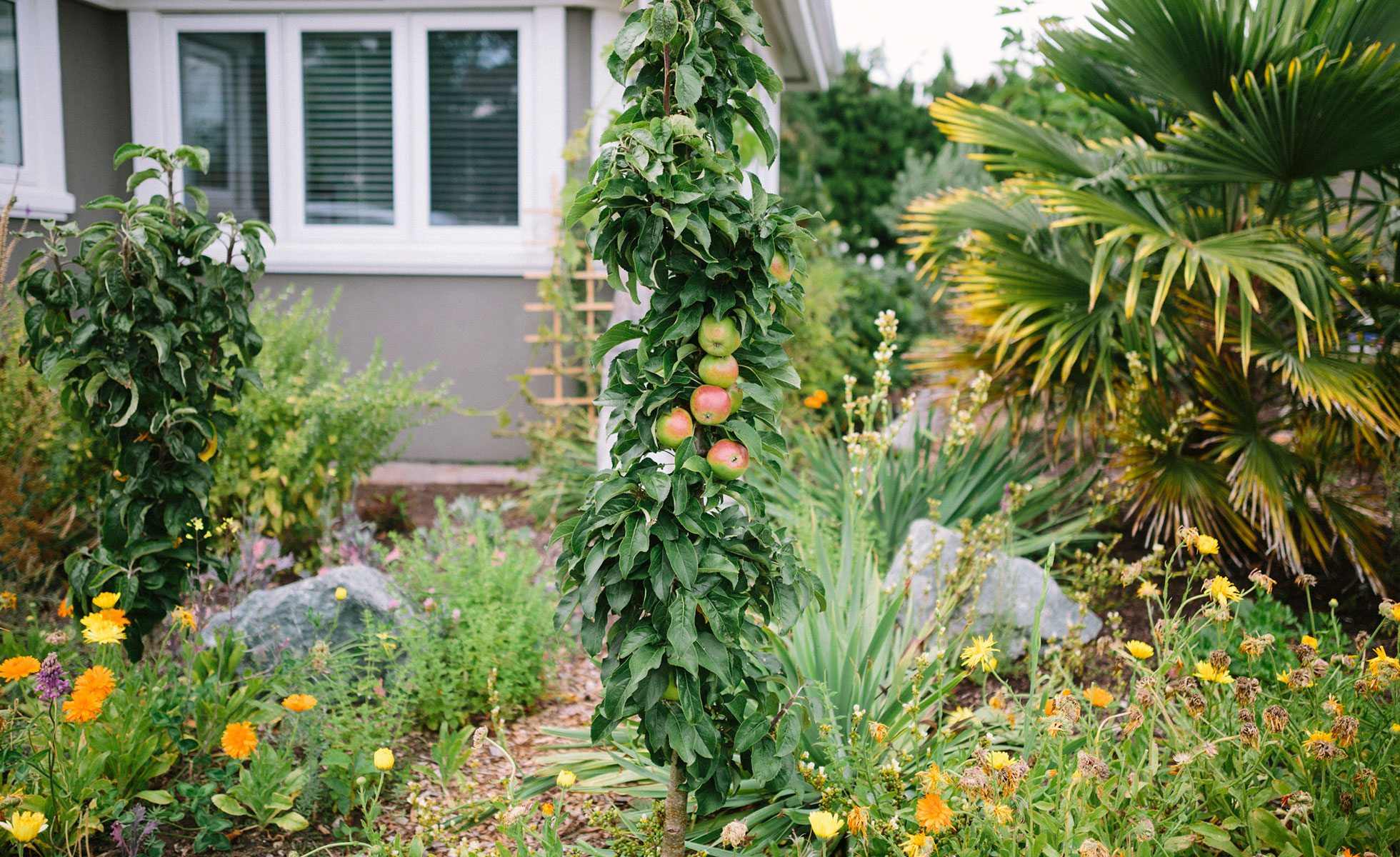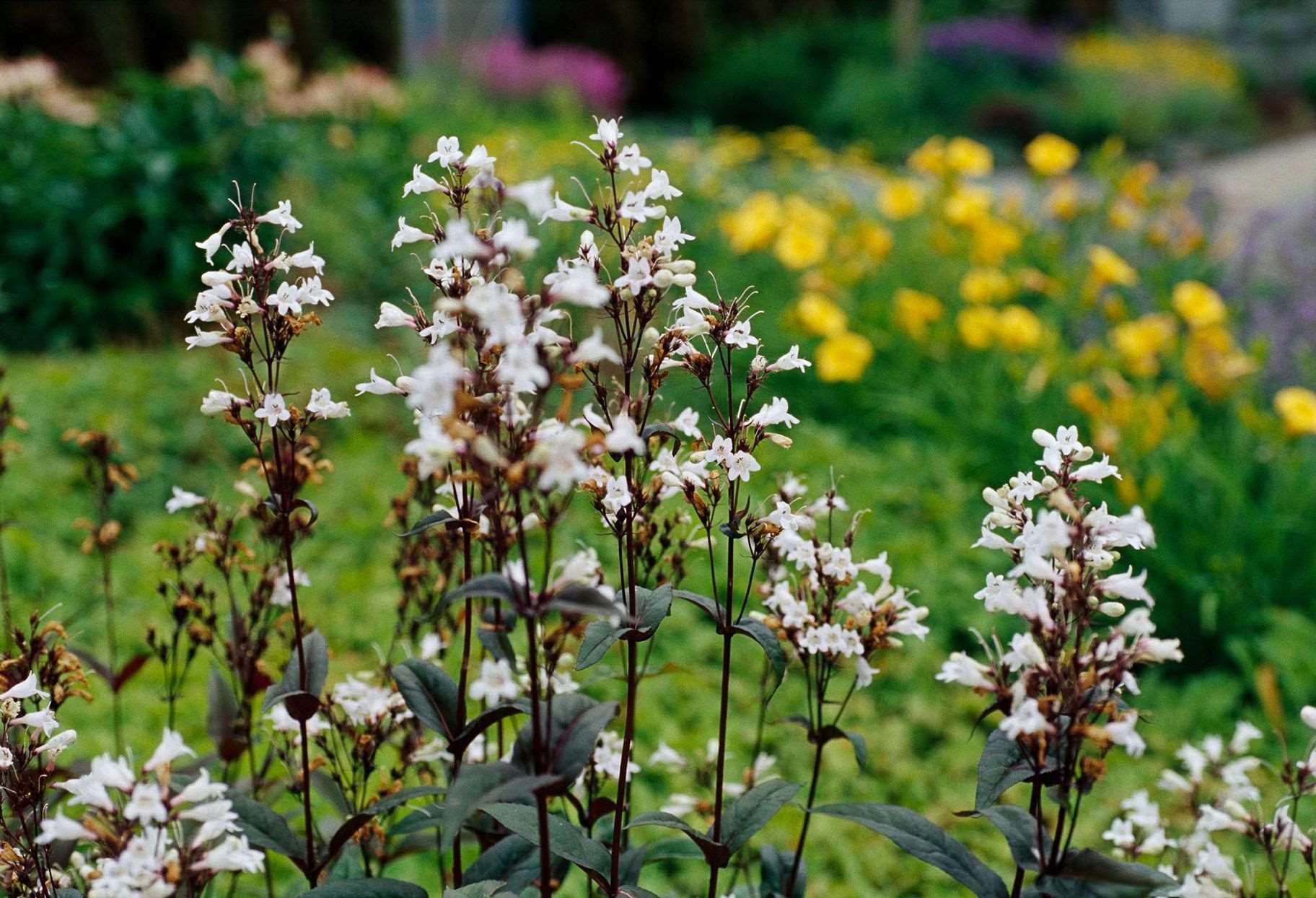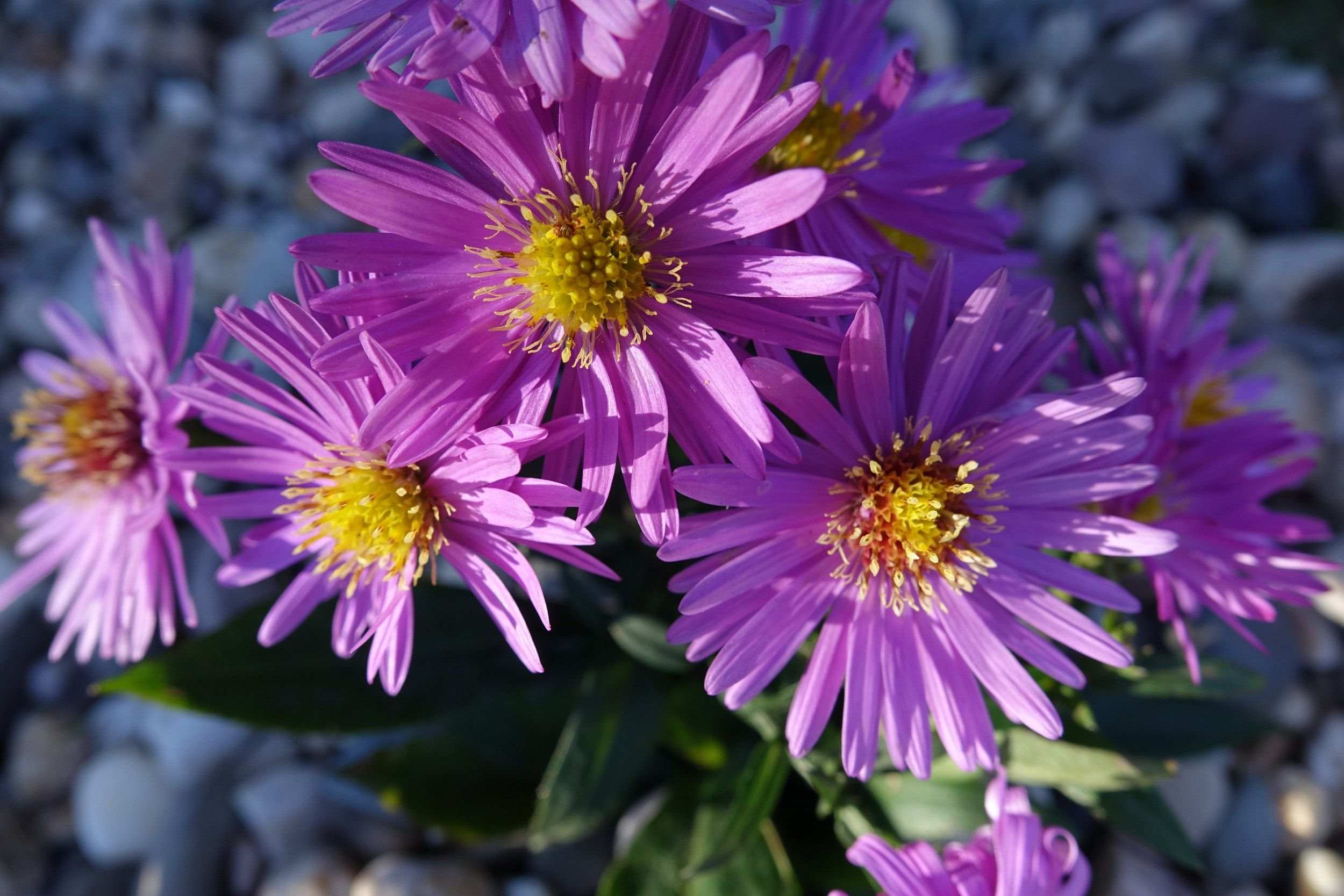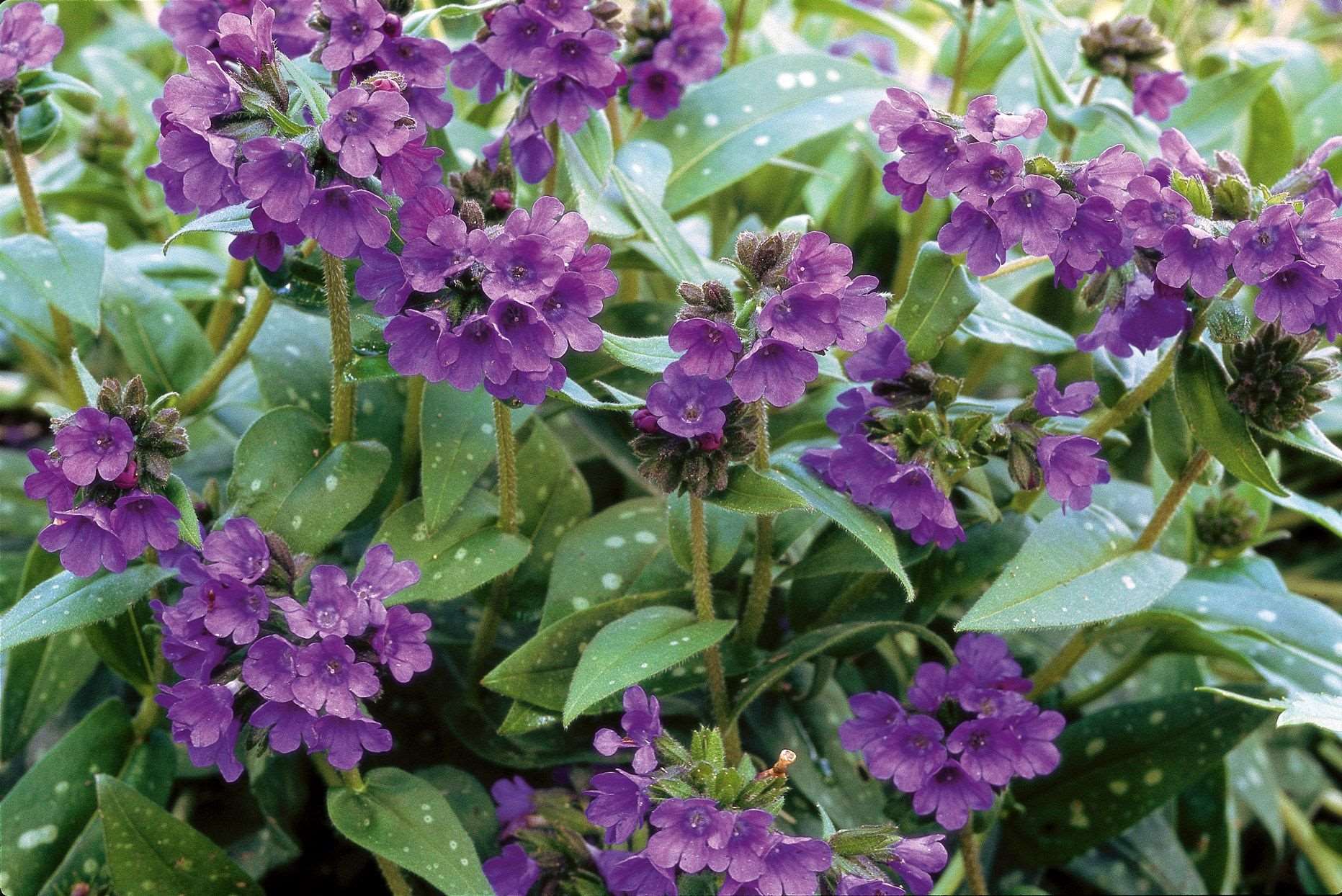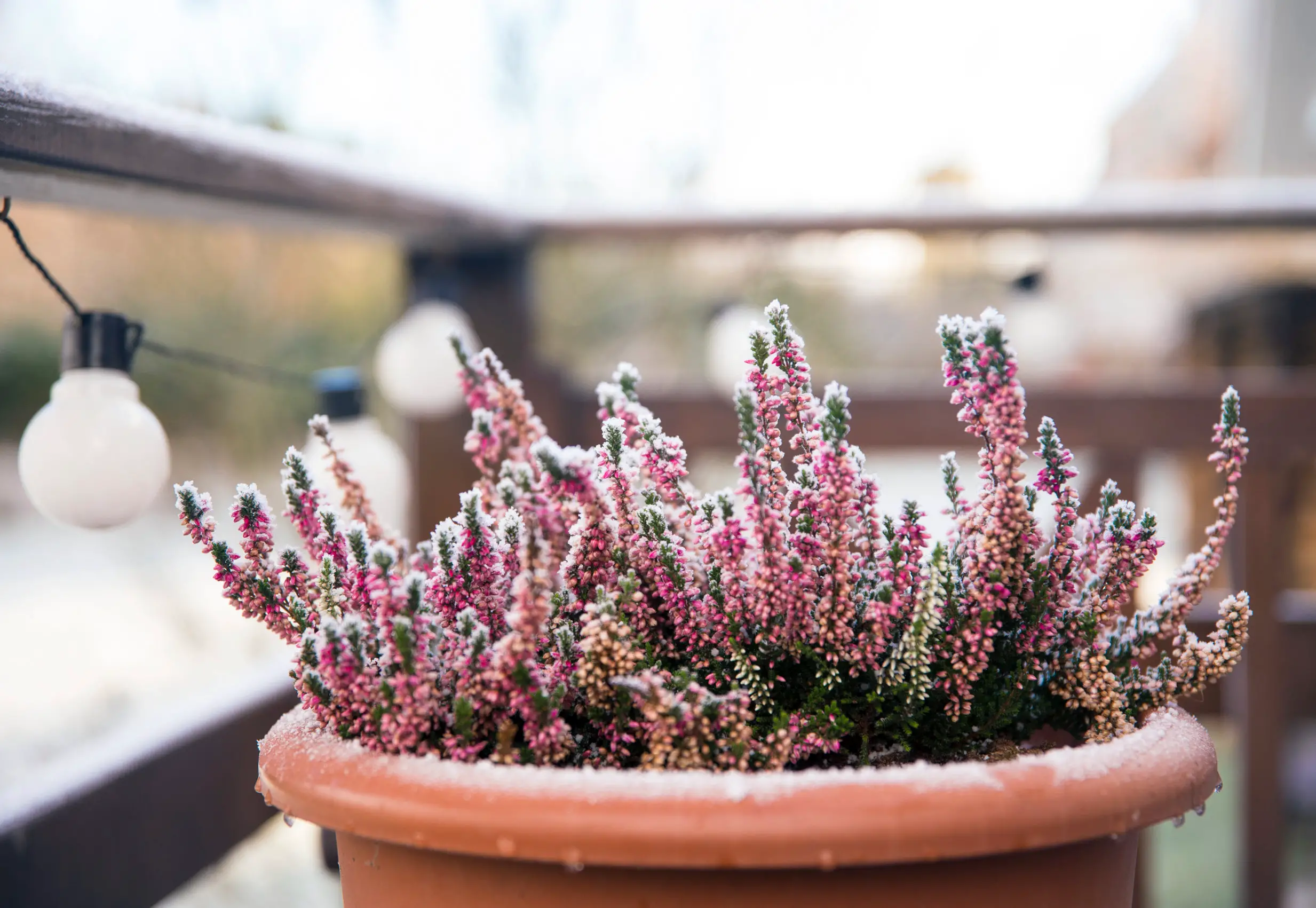Home>Types of Gardening>Ornamental Gardening>What Are Herbaceous Perennials


Ornamental Gardening
What Are Herbaceous Perennials
Modified: February 8, 2024
Discover the beauty of herbaceous perennials in ornamental gardening. Learn how to cultivate and maintain these stunning plants for a vibrant and long-lasting garden.
(Many of the links in this article redirect to a specific reviewed product. Your purchase of these products through affiliate links helps to generate commission for Chicagolandgardening.com, at no extra cost. Learn more)
Table of Contents
- Introduction
- Definition of Herbaceous Perennials
- Characteristics of Herbaceous Perennials
- Common Types of Herbaceous Perennials
- Advantages of Growing Herbaceous Perennials
- How to Plant and Care for Herbaceous Perennials
- Popular Herbaceous Perennial Varieties
- Tips for Designing a Herbaceous Perennial Garden
- Problems and Solutions for Herbaceous Perennials
- Conclusion
Introduction
Welcome to the world of ornamental gardening! If you have a passion for enhancing the beauty of your outdoor space and creating a vibrant, colorful garden, you’ve come to the right place. In ornamental gardening, one of the key elements to consider is the use of herbaceous perennials. These plants not only provide a stunning aesthetic appeal but also offer several benefits that make them a popular choice among gardeners.
Herbaceous perennials, as the name suggests, are plants that live for more than two years and have soft, non-woody stems. Unlike annuals that complete their life cycle within one growing season, herbaceous perennials possess the remarkable ability to regrow year after year, bringing beauty and vitality to your garden.
In this article, we will explore the world of herbaceous perennials in depth, delving into their characteristics, common types, advantages, and tips for planting and caring for these magnificent plants. Whether you’re a seasoned gardener or a beginner, you’ll find valuable insights that will help you create and maintain a breathtaking herbaceous perennial garden.
So, let’s embark on this horticultural journey together and discover the wonders of herbaceous perennials! While they may require some care and attention, the rewards far outweigh the efforts, as you’ll soon see.
Definition of Herbaceous Perennials
Before we dive into the world of herbaceous perennials, let’s first understand what they actually are. Herbaceous perennials are a category of plants that have non-woody stems and live for more than two years. Unlike annuals, which complete their life cycle within one growing season, herbaceous perennials have the remarkable ability to regrow from their underground parts year after year.
Herbaceous perennials encompass a wide range of plant species, including flowers, grasses, and foliage plants. They can vary in size, shape, and color, providing an infinite array of possibilities for creating stunning garden compositions that change and evolve over time.
Unlike shrubs and trees, herbaceous perennials do not have permanent woody structures above the ground. Instead, their stems and leaves die back in winter or during periods of dormancy, only to emerge again and flourish when the conditions are favorable. This dormancy period allows the plant to conserve energy, withstand harsh weather conditions, and prepare for the next growing season.
Herbaceous perennials are known for their versatility in garden design. They can be used as focal points, borders, ground covers, or fillers in mixed plantings. With their extensive range of colors, textures, and forms, herbaceous perennials add depth, interest, and drama to any landscape.
It’s also important to note that herbaceous perennials differ from evergreen perennials, which retain their foliage throughout the year. While some herbaceous perennials may have evergreen characteristics in mild climates, many will exhibit deciduous traits, shedding their foliage during winter.
Now that we have a clear understanding of what herbaceous perennials are, let’s explore their unique characteristics that make them such valuable additions to any garden.
Characteristics of Herbaceous Perennials
Herbaceous perennials possess several unique characteristics that make them highly desirable for ornamental gardening. Understanding these traits will help you appreciate their beauty and adaptability in various garden settings. Let’s explore some key characteristics of herbaceous perennials:
Diversity: Herbaceous perennials come in a wide range of sizes, shapes, colors, and textures. From delicate flowers to ornamental grasses and lush foliage plants, there is something to suit every garden style and personal preference.
Longevity: Unlike annuals that complete their life cycle within one year, herbaceous perennials can live for several years, often for many decades. With proper care, they continue to grow and bloom year after year, adding enduring beauty to your garden.
Seasonal Adaptability: Herbaceous perennials exhibit a remarkable ability to adapt to changing seasonal conditions. They go through periods of dormancy during winter when above-ground growth dies back, and then reemerge with renewed vigor in the following growing season.
Low Maintenance: Once established, herbaceous perennials generally require less maintenance compared to annuals and biennials. They have established root systems that make them more resilient, and they often require less water, fertilizer, and pruning.
Biodiversity: Herbaceous perennials attract pollinators like butterflies, bees, and hummingbirds, contributing to the biodiversity and ecological balance of your garden. Their flowers provide nectar and pollen, supporting the life cycles of many beneficial insects and wildlife.
Adaptability: Herbaceous perennials can thrive in a wide range of growing conditions, including varying soil types, light levels, and climates. With careful selection and proper placement, you can find herbaceous perennials that are well-suited to your specific garden environment.
Visual Appeal: One of the most exceptional characteristics of herbaceous perennials is their visual appeal. From vibrant blooms that add bursts of color to architectural foliage that provides structure and texture, these plants create a captivating and ever-changing display in your garden.
These characteristics make herbaceous perennials an excellent choice for creating diverse, beautiful, and sustainable gardens. Now that we understand their unique features, let’s explore some of the most common types of herbaceous perennials you can incorporate into your landscaping.
Common Types of Herbaceous Perennials
When it comes to herbaceous perennials, the options are truly endless. These versatile plants come in various forms, colors, and sizes, allowing you to create endless combinations and designs in your garden. Here are some common types of herbaceous perennials that you can consider:
1. Flowering Perennials: Flowering perennials are a popular choice amongst gardeners for their vibrant blooms and ability to add a splash of color to the landscape. Some popular examples include roses, daylilies, peonies, coneflowers, asters, and daisies. These plants produce flowers in different shapes, sizes, and colors, providing a beautiful focal point in any garden.
2. Ornamental Grasses: Ornamental grasses are known for their graceful movement and architectural appeal. They add texture and movement to the garden, often with feathery plumes or slender blades that sway in the breeze. Examples of popular ornamental grasses include feather reed grass, maiden grass, switchgrass, and fountain grass.
3. Foliage Plants: Foliage plants are valued for their attractive leaves that come in a wide variety of shapes, colors, and textures. Hostas, ferns, heucheras, and coleus are popular choices for their vibrant foliage that can create stunning visual interest even when not in bloom.
4. Groundcovers: Groundcover perennials are low-growing plants that spread and form a dense carpet-like effect, making them the perfect choice for covering large areas. Creeping phlox, creeping thyme, bugleweed, and sedums are popular options for creating a lush groundcover that adds both color and texture to your garden.
5. Bulbs and Corms: Many flowering perennials grow from bulbs or corms, which are underground storage structures. Examples include tulips, daffodils, lilies, irises, and crocuses. These plants often bloom in spring, providing a burst of color and fragrance after the winter months.
6. Climbers and Vines: Climbing or vining perennials can add vertical interest to your garden, whether by climbing trellises, fences, or walls. Clematis, climbing roses, honeysuckle, and wisteria are examples of popular climbers that offer stunning blooms and create a vertical focal point in the garden.
These are just a few examples of the many types of herbaceous perennials available. It’s important to consider factors such as your garden’s conditions, climate, and personal preferences when selecting the right herbaceous perennials for your landscaping project. With a bit of research and planning, you can create a diverse and visually appealing garden that showcases the beauty of these resilient plants.
Advantages of Growing Herbaceous Perennials
Choosing herbaceous perennials for your garden comes with a multitude of benefits. These versatile plants offer numerous advantages that make them a popular choice among gardeners of all skill levels. Let’s explore some of the advantages of growing herbaceous perennials:
1. Longevity: One of the most significant advantages of herbaceous perennials is their longevity. These plants can live for many years, often enduring for decades with proper care and maintenance. This means you can enjoy their beauty and charm for an extended period without the need for replanting.
2. Cost-Efficiency: While the initial cost of purchasing herbaceous perennials may be higher than buying annuals, they prove to be a cost-effective choice in the long run. Since they come back year after year, you don’t have to spend money on buying new plants annually or replanting your garden every season.
3. Low Maintenance: Herbaceous perennials generally require less maintenance compared to annuals and biennials. Once established, they have strong root systems that make them more resilient to drought and other environmental stresses. They often require less water, fertilizer, and pruning, making them a convenient choice for busy gardeners.
4. Sustainability: These perennial plants have the ability to survive and thrive over multiple seasons. By incorporating herbaceous perennials into your garden, you contribute to the overall sustainability of your landscape. They reduce the need for excessive plantings and minimize environmental impact.
5. Environmental Benefits: Herbaceous perennials play a crucial role in supporting the local ecosystem. Their flowers attract pollinators such as bees, butterflies, and hummingbirds, aiding in the pollination of other plants and promoting biodiversity in your garden. Additionally, their root systems help prevent soil erosion and improve its structure.
6. Seasonal Interest: Herbaceous perennials offer something for every season, adding visual interest and variety to your garden throughout the year. From early spring bulbs to summer blooms and colorful foliage in the fall, these plants create a dynamic and ever-changing landscape.
7. Flexibility in Design: With their wide range of colors, textures, shapes, and growth habits, herbaceous perennials provide endless opportunities for creative garden design. You can use them as focal points, borders, or fillers in mixed plantings, allowing you to create a personalized and unique garden space.
These advantages make herbaceous perennials a worthwhile investment for any garden enthusiast. By incorporating these resilient plants into your landscape, you can enjoy their beauty, reduce maintenance efforts, and contribute to the overall sustainability and environmental health of your garden.
How to Plant and Care for Herbaceous Perennials
Planting and caring for herbaceous perennials is relatively straightforward, but a few key considerations can help ensure their success and longevity in your garden. Here are some essential tips to keep in mind:
1. Site Selection: Choose a location in your garden that provides the ideal growing conditions for the specific herbaceous perennials you plan to plant. Consider factors such as sunlight exposure, soil type and fertility, and drainage. Most herbaceous perennials thrive in well-draining soil with at least six hours of direct sunlight per day.
2. Soil Preparation: Prepare the soil by removing any weeds, rocks, or clumps. Loosen the soil to improve its structure and add organic matter like compost to enhance drainage and nutrient content. This step will provide a good foundation for root development and overall plant health.
3. Planting Technique: Dig a hole that is slightly wider and deeper than the root ball or container of the herbaceous perennial. Gently remove the plant from its container, loosen the roots if they’re tightly packed, and place the plant in the hole. Backfill the hole with soil, firming it gently around the plant to eliminate any air pockets. Water thoroughly after planting to ensure good root-to-soil contact.
4. Watering: Proper watering is crucial during the establishment period and throughout the growing season. Water herbaceous perennials deeply, allowing the soil to dry slightly between waterings. Water at the base of the plant to minimize foliage wetness and reduce the risk of fungal diseases. Avoid overwatering, as it can lead to root rot or other issues.
5. Mulching: Apply a layer of organic mulch, such as shredded bark or compost, around the base of the plant. Mulch helps conserve moisture, suppress weeds, and regulate soil temperature. Apply mulch to a depth of 2-3 inches, ensuring it does not touch the stems or crowns of the plants to prevent rotting.
6. Fertilizing: While herbaceous perennials generally do not require heavy feeding, applying a slow-release, balanced fertilizer in spring can help provide the necessary nutrients for healthy growth and blooming. Follow the recommended application rates on the fertilizer package and avoid excessive fertilization, as it may result in weak growth or increased susceptibility to diseases.
7. Pruning: Most herbaceous perennials benefit from regular pruning to maintain their shape and promote healthy growth. Deadheading, or removing faded flowers, encourages reblooming and prolongs the plant’s flowering period. In late fall or early spring, cut back the foliage to the ground to allow for new growth and rejuvenation.
8. Pest and Disease Control: Monitor your herbaceous perennials regularly for signs of pests or diseases, such as aphids, powdery mildew, or slugs. Promptly address any issues by using organic pest control methods or consulting with a local gardening expert if necessary.
By following these planting and care tips, you can create an environment that promotes the health and growth of your herbaceous perennials. Remember that different plant species may have specific requirements, so it’s essential to research and tailor your care practices accordingly.
Popular Herbaceous Perennial Varieties
Herbaceous perennials offer a vast array of options when it comes to choosing plants for your garden. Whether you’re looking for show-stopping flowers or stunning foliage, there is a perennial variety to suit every taste and garden style. Here are some popular herbaceous perennial varieties that are beloved by gardeners:
1. Daylilies (Hemerocallis): Daylilies are prized for their vibrant and abundant blooms that come in a wide range of colors, including yellows, oranges, pinks, and purples. They are a low-maintenance choice and can tolerate various growing conditions, making them suitable for beginners and seasoned gardeners alike.
2. Black-eyed Susans (Rudbeckia): Black-eyed Susans are cheerful and easy-to-grow perennials that produce bright yellow or orange daisy-like flowers with dark centers. They attract pollinators like bees and butterflies and are drought-tolerant, making them ideal for sunny locations in your garden.
3. Coneflowers (Echinacea): Coneflowers are well-known for their stunning daisy-like flowers with prominent cone-shaped centers. They come in a variety of colors, including shades of pink, lavender, purple, and white. Coneflowers are not only beautiful but also attract beneficial insects and birds to your garden.
4. Hostas: Hostas are favored for their lush foliage and shade tolerance. These perennials exhibit a wide range of leaf sizes and colors, from vibrant greens to variegated patterns. Hostas serve as excellent ground covers or border plants in shady areas of your garden.
5. Lavender (Lavandula): Lavender is a fragrant herbaceous perennial that adds beauty and aromatherapy to any garden. Its slender spikes of purple, pink, or white flowers are not only visually appealing but also attract bees and butterflies. Lavender is known for its calming fragrance and is often utilized in homemade beauty products, teas, and potpourri.
6. Russian Sage (Perovskia atriplicifolia): Russian Sage is a stunning perennial with silvery-gray foliage and spiky lavender-blue flowers. It thrives in hot and dry conditions and is a great addition to contemporary or cottage-style gardens. Russian Sage also attracts bees and butterflies to your garden.
7. Peonies (Paeonia): Peonies are beloved for their large, fragrant, and showy blooms. They come in a variety of colors, including shades of pink, white, and red. Peonies are long-lived and can produce beautiful flowers for many years, making them a favorite for creating stunning floral arrangements.
These are just a few examples of the numerous herbaceous perennial varieties available. When selecting perennials for your garden, consider factors such as their preferred growing conditions, bloom time, and overall maintenance requirements. By incorporating a mix of perennial varieties, you can create a visually captivating and engaging garden that brings joy and beauty throughout the seasons.
Tips for Designing a Herbaceous Perennial Garden
Designing a herbaceous perennial garden is an exciting opportunity to unleash your creativity and create a stunning outdoor oasis. Here are some tips to consider when planning and designing your herbaceous perennial garden:
1. Determine Your Garden’s Theme: Before you start selecting plants, decide on the overall theme or style you want to achieve in your garden. Do you prefer a formal, cottage-inspired, or naturalistic design? Having a clear theme in mind will guide your plant selection, color palette, and overall garden layout.
2. Consider Bloom Times: To ensure a continuous display of color throughout the seasons, choose herbaceous perennials with different bloom times. By combining plants that bloom in spring, summer, and fall, you can create a garden that offers visual interest and beauty year-round.
3. Plant in Layers: Layering is an effective way to create depth and visual interest in your garden. Place taller herbaceous perennials towards the back or center of your garden beds, with medium-sized plants in the middle, and shorter varieties towards the front. This technique creates a dynamic and visually appealing composition.
4. Consider Plant Combinations: Certain herbaceous perennials pair well together, either due to their complementary colors, foliage textures, or growth habits. Research suitable plant combinations to create harmonious and cohesive planting schemes. Experiment with contrasting or complementary colors to add visual impact.
5. Pay Attention to Foliage: While flowers are often the main attraction in a herbaceous perennial garden, don’t overlook the importance of foliage. Incorporate plants with interesting leaf shapes, textures, and colors to add visual interest, even when the flowers are not in bloom. Foliage plants can provide structure and create a backdrop for more showy blooms.
6. Create Pathways and Borders: A well-designed perennial garden should have defined pathways and borders to create structure and guide the eye. Use stepping stones, gravel, or other materials to create meandering paths that invite exploration. Borders made of rocks, bricks, or plants can provide a visual boundary and add structure to your garden beds.
7. Be Mindful of Planting Density: Consider the mature size and growth habits of the herbaceous perennials you choose. Planting too densely can result in overcrowding and competition for resources, while spacing plants too far apart can lead to gaps and a lack of visual impact. Follow recommended spacing guidelines to ensure adequate airflow and room for growth.
8. Incorporate Vertical Elements: Add vertical elements such as trellises, obelisks, or arches for climbing plants or tall herbaceous perennials. These features provide height, create focal points, and add another dimension to your garden design. Choose structures that complement the overall theme and style of your garden.
9. Consider Year-round Interest: While herbaceous perennials can bring vibrant colors and beauty to your garden, also think about incorporating evergreen plants or interesting winter structures that provide visual interest during the dormant season. This ensures that your garden looks appealing even when the herbaceous perennials are not in bloom.
By following these tips and taking a considered approach to your herbaceous perennial garden design, you can create a visually stunning and cohesive outdoor space that reflects your personal style and brings joy throughout the seasons.
Problems and Solutions for Herbaceous Perennials
While herbaceous perennials are generally resilient and low-maintenance, they can still encounter a few challenges throughout their lifespan. Understanding common problems that may arise and having appropriate solutions will help ensure the health and vitality of your garden. Here are some common problems you may face with herbaceous perennials and ways to address them:
1. Disease and Fungal Infections: Herbaceous perennials can be susceptible to various diseases, such as powdery mildew, rust, or fungal infections. To prevent or address these issues, ensure good air circulation by properly spacing your plants. Remove infected plant parts and foliage promptly, and consider using organic fungicides or contacting a local gardening expert for guidance.
2. Insect Pests: Insects like aphids, slugs, or caterpillars may occasionally feast on your herbaceous perennials. Regularly inspect your plants for any signs of insect activity and take appropriate measures to control them. Use organic insecticides or introduce beneficial insects like ladybugs or praying mantises to help manage pest populations naturally.
3. Poor Soil Drainage: Some herbaceous perennials are sensitive to poorly draining soil, which can result in root rot or other water-related issues. Improve soil drainage by incorporating organic matter like compost or sand. If the problem persists, consider creating raised beds or planting in containers with well-draining soil.
4. Insufficient or Excessive Watering: Achieving the right balance of watering is essential for the health of herbaceous perennials. Overwatering can lead to root rot, while underwatering can cause stress and affect blooming. Water plants deeply and regularly during dry periods, ensuring that the soil is moist but not waterlogged. Use your fingers or moisture meters to check the soil moisture level before watering.
5. Lack of Sunlight: Many herbaceous perennials thrive in full sunlight and may struggle to grow and bloom if they don’t receive adequate light. If your garden has limited sun exposure, choose shade-tolerant perennials that are better suited to those conditions. Consider creating shade with pergolas or arbors for those plants that prefer partial shade.
6. Competition from Weeds: Weeds can compete with herbaceous perennials for crucial resources like sunlight, water, and nutrients. Regularly weed your garden beds to keep competition at bay. Mulching can also help suppress weed growth and conserve soil moisture, reducing the need for constant weeding.
7. Lack of Winter Protection: Some herbaceous perennials may need protection during harsh winters, especially in colder climates. Apply a layer of mulch after the ground freezes to provide insulation, or use protective coverings like burlap or frost blankets. This will help prevent damage to the plants’ crowns and ensure their survival through the winter months.
Remember, prevention is key to maintaining the health of your herbaceous perennials. Regularly inspect your plants for signs of distress, promptly address any issues that arise, and implement good cultural practices like proper watering, adequate spacing, and appropriate fertilization. By being proactive and attentive, you can overcome many challenges and enjoy a flourishing herbaceous perennial garden.
Conclusion
Herbaceous perennials are a wonderful addition to any garden, offering beauty, longevity, and sustainability. These versatile plants with their stunning flowers, attractive foliage, and resilience have become favorites among gardeners of all levels of expertise.
In this article, we explored the definition and characteristics of herbaceous perennials, delving into the diverse types available and the advantages they bring to our gardens. We also discussed essential planting and care tips to ensure the success of these perennials and explored popular varieties that can add color and interest to any landscape. Additionally, we addressed potential problems that can arise and offered solutions to help maintain the health and vitality of these plants.
Whether you are starting a new garden or looking to enhance an existing one, herbaceous perennials provide endless opportunities for creativity and beauty. With their long lifespan, low maintenance requirements, and ability to attract beneficial insects, these plants contribute to the sustainability and biodiversity of our outdoor spaces.
By carefully selecting herbaceous perennials that suit your garden’s conditions and personal preferences, you can create a stunning and dynamic landscape that changes with the seasons. Remember to consider bloom times, foliage diversity, and design elements like pathways and borders to create a visually pleasing and harmonious garden.
While challenges may arise, with proper care and attention, you can mitigate potential issues and ensure the continued health of your herbaceous perennials. Regular inspections, good cultural practices, and prompt problem-solving will help maintain the beauty and longevity of these plants.
So, embark on your herbaceous perennial gardening journey with passion and a spirit of experimentation. Create a space that reflects your personal style, brings joy to your life, and offers a sanctuary for nature to thrive. With herbaceous perennials as your companions, your garden will flourish with beauty, color, and natural wonder for years to come.

